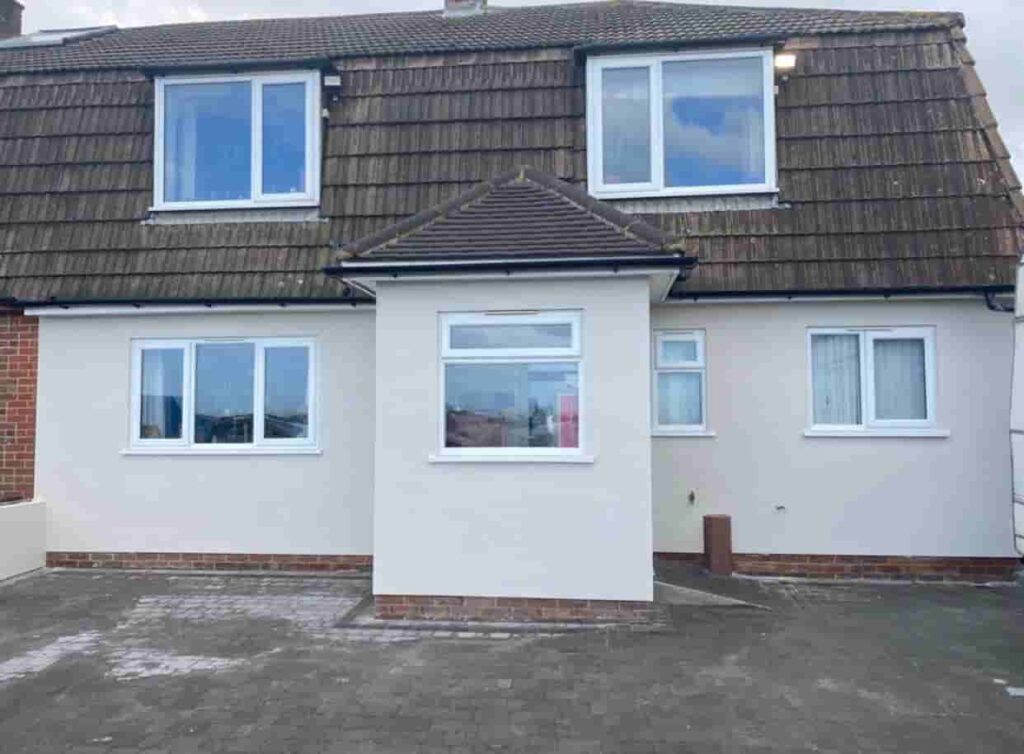As winter approaches, ensuring that your home is fully prepared to withstand the colder months is essential. One area that often gets overlooked is the chimney. A well-maintained chimney not only enhances your home’s heating efficiency but also prevents potential damage caused by winter weather. At Swanmore Roofing Repairs, we understand the importance of chimney maintenance and repairs for homeowners in Swanmore, Hampshire. In this post, we’ll discuss common chimney issues and how to address them before winter sets in.
Common Chimney Issues Homeowners Face
- Cracked or Damaged Masonry One of the most common issues with chimneys is cracked or damaged masonry. Over time, exposure to the elements causes bricks and mortar to deteriorate, leading to cracks and gaps. During winter, water can seep into these cracks, freeze, and expand, causing further damage. This freeze-thaw cycle can lead to structural problems, making it essential to repair any damaged masonry before the colder months.
- Leaking Chimney A leaking chimney can cause significant damage to your roof and home’s interior if not addressed promptly. Common causes of chimney leaks include damaged flashing, worn-out mortar, or cracks in the chimney crown. If water penetrates your chimney during winter, it can lead to damp problems, mould growth, and even damage to your ceilings or walls.
- Chimney Blockages Blockages in your chimney can pose a serious risk, particularly if you use a fireplace or wood burner. Common causes of blockages include debris build-up, bird nests, and creosote accumulation (from burning wood). These blockages can prevent smoke and dangerous gases from escaping, increasing the risk of carbon monoxide poisoning. Regular cleaning and inspection are crucial to avoid blockages.
- Deteriorated Chimney Crown The chimney crown is the concrete or metal cap at the top of your chimney that prevents water from entering. Over time, the crown can crack or deteriorate, allowing water to seep into the chimney structure. This can lead to water damage, leaks, and further structural issues. Repairing or replacing a damaged chimney crown is essential to maintain the integrity of your chimney.
- Worn or Damaged Flashing Flashing is the material used to seal the joints between your chimney and roof. Damaged or worn flashing can allow water to leak into your roof, causing moisture damage and rot. As the winter season approaches, ensuring that your chimney flashing is intact and properly sealed can help prevent leaks and avoid costly roof repairs.
- Efflorescence Efflorescence is the white staining often seen on chimney exteriors, caused by moisture passing through the masonry and leaving behind salt deposits. While efflorescence itself is not damaging, it indicates moisture problems within your chimney. Ignoring this sign can lead to more serious issues, such as spalling or structural damage, if left unaddressed.
How to Fix Common Chimney Problems
- Masonry Repairs To fix cracks or damaged bricks, it’s essential to repoint or rebuild the affected areas. Repointing involves removing the damaged mortar and replacing it with fresh mortar to restore the structure’s stability. In more severe cases, damaged bricks may need to be replaced.
- Waterproofing Applying a waterproof sealant to your chimney can help protect the masonry from water penetration, particularly during the wet winter months. This is a preventative measure that can extend the lifespan of your chimney by preventing freeze-thaw damage.
- Chimney Cap and Crown Repairs If your chimney crown is cracked, it should be repaired or replaced to prevent water from entering the chimney. Installing a chimney cap can also help keep debris, rain, and wildlife out, reducing the risk of blockages and leaks.
- Flashing Replacement Damaged flashing should be replaced or resealed to ensure a watertight seal between your chimney and roof. This will prevent water from leaking into your home and protect both your roof and chimney structure from further damage.
- Chimney Sweeping Scheduling a professional chimney sweep is essential to remove any debris or creosote build-up that could cause blockages or fire hazards. Regular cleaning ensures your chimney is safe to use, especially during the colder months when it’s most needed.
Conclusion
Ensuring that your chimney is in good condition before winter arrives is essential for protecting your home from water damage, leaks, and potential hazards such as blockages and carbon monoxide build-up. At Swanmore Roofing Repairs, we offer comprehensive chimney repair services to homeowners in Swanmore, Hampshire. Whether you need masonry repairs, flashing replacement, or a simple chimney inspection, our expert team is here to help.
Contact us today to schedule a chimney inspection and ensure your home is ready for the winter months ahead.
Call us on: 01489 357 099
Click here to find out more about Swanmore Roofing Repairs
Click here to complete our contact form and see how we can help with your roofing needs.

